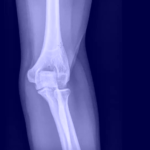Atelectasis is described as the collapsing of the lung. This collapse can either be a minor section of the lung or shrinkage of the entire lung. Atelectasis occurs when small alveoli present in lungs are incapable of re-inflating and result to air flow being hampered. This is one of the many probable complications after surgery or anesthesia usage.
It also occurs in the patients who have stayed in the hospital for a long time or those confined to best rest for a long while. There are varied kinds of atelectasis based on the symptoms’ severity and the cause of the disorder. Discoid atelectasis is amongst the many kinds of atelectasis.
What causes discoid atelectasis?
This condition may arise due to the following things:
- It is deemed amongst the many side effects associated with general anesthesia
- It can happen following lung or abdominal surgery as a complication
- Restricted motions of the diaphragm because of paralysis can lead to this disorder
- Mostly, pulmonary embolism can cause this condition, whereby there is a clot in pulmonary arteries causing the lung to dysfunction
- Discoid atelectasis can also result from fluid accumulation in the abdomen, known as ascites.
- Most elements that add to lung pressure. One of the common conditions is pleural effusion; fluid collection in pleura, the lining covering the lungs.
- Bronchioles obstruction by any foreign object.
- Pooling of mucus or blood in the middle bronchi that is not cleared because of reduced diaphragmatic movement or reduced cough reflex can lead to discoid atelectasis.
- This condition can also result from lung tumors as well as other diseases of the lung.
Symptoms of discoid atelectasis
The field of discoid atelectasis is very small and it can or cannot produce signs. If present, they are mostly confused with other illnesses of the chest. Some of the general signs like breathing difficulties, chest pains or moderate to mild coughs are mostly confused since they are also present in most of the other lung disorders. In instances where the doctor suspects discoid atelectasis, they normally depend on radiological results like chest X ray or lungs CT scan.
Diagnosis and tests
For atelectasis to be diagnosed and the underlying cause to be determined, the doctor can organize for the tests below:
- Chest X-ray: This normally helps diagnose atelectasis. Rarely, a foreign object, one of the common causes of obstructive atelectasis in adults and children, will be viewed in this sort of imaging procedure.
- CT scan: The CT scan is a but sensitive as compared to the usual X-ray in identifying atelectasis since it is able to measure volumes of lungs in part or all lungs. This type of scan will also aid in establishing if a tumor is the reason behind the lung collapsing, something that can fail to be seen in the normal X-ray.
- Oximetry: This is an easy test that makes use of a minute device that s put in one finger so as to measure the saturation of oxygen in the blood.
- Bronchoscopy: This is a lighted and flexible threaded tube that is place down the throat and ensures that the doctor is able to note and maybe remove obstacles in the airway like foreign bodies, mucus plug or tumors.
Treatment alternatives for discoid atelectasis
The major goal of treating discoid atelectasis or all other forms of atelectasis is to allow free air entry through expanding the alveoli to the distorted parts of the lungs. The treatment procedures can vary based on the principal cause behind the disorder.
- Firstly, you can attempt draining the accumulated fluid through laying the head in a lower position. This means that the head should lie below the position of the heart. This process will cause the mucus or fluid amassed in the bronchi to come out and drain through the moth via coughing.
- Clapping the affected chest area of the collapsed lung or alveoli will aid in loosening the mucus as well as making some space to allow for free air flow.
- Exercises of deep breathing are vital in removing the accumulated mucus in the airspace and lungs.
- In the event that the normal method of chest physiotherapy is ineffective, mucus impaction may need therapeutic bronchoscopy.
- The patient must more around in the event that they are confined in bed for a long while. This will aid in inflating and expanding the collapsed lung.
- There are times when bronchodilator medicines are effective in relieving discoid atelectasis. It ensures that breathing is easier through dilating bronchial tubes and draining mucus.
Many instances of discoid atelectasis will not need treatment since the alveoli re-inflates alone over some span of time. Because the area affected is quite small, the other part of the lung functions normally and the patient will not suffer any serious breathing complications.
Nevertheless, in the event that the collapsed section is large, some medical intervention will be required. The children suffering discoid atelectasis will have to be hospitalized for treatment to occur effectively. Since there us a great risk of pneumonia and infection, caution must be taken to ensure that the patient recovers fully from the illness.

Excellent read, I just passed this onto a colleague who was doing some research on that. And he just bought me lunch since I found it for him smile So let me rephrase that: Thanks for lunch!